Painting the outside of your home is obviously something that you don’t want to screw up. There are a bunch of different factors you’ll want to consider when painting the exterior of your home, such as paint type, paint color, sun exposure, cleaning your walls, but the weather/time of year is another huge thing to consider when painting your exterior. Living in Colorado, you’re definitely aware that it tends to get pretty cold on occasion, especially at nighttime. Cold weather can impact a bunch of different aspects of exterior painting, all of which you’ll want to be aware of to make sure you get a nice, well-painted home.
When it comes to exterior painting in cold weather, there is a lower threshold for when the paint won’t cure correctly.
You have the metaphorical “green light”, so to speak, to paint as long as it’s above 35 degrees.
Many paints with low curing temperatures do not have additives, allowing for a superior finish.
However, this "35 degrees" refers to the lowest temperature you’ll get that day. A common misconception is that you can paint when the daytime high is above 50 and the overnight low is below 35.
However, the daytime high isn’t the only temperature that matters. You should also consider the overnight low, which should remain above 35 degrees since exterior paint typically won’t fully dry and cure in half a day.
Temperature-wise, while you won’t face any problems during the paint application, you will encounter difficulties during the drying stage. Paints stop melding or coalescing if the temperatures are too low, even higher than 35 depending on other factors. Other factors, such as the brushes and type of paint, can make a difference in the results, too.
Uncured paints can also expose your home to unwanted moisture. Dew forms on surfaces overnight because cold air doesn’t retain water vapor as well as warm air. When the moisture evaporates, it causes ingredients to come to the surface, creating stains and hindering adhesion.
For exterior painting in cold weather, the key is to pick a paint designed for cold (35-degree) weather that is water-resistant. The formula lets the paint cure on time and wicks moisture away from your home. These paints have twice the moisture resistance as standard latex coatings.
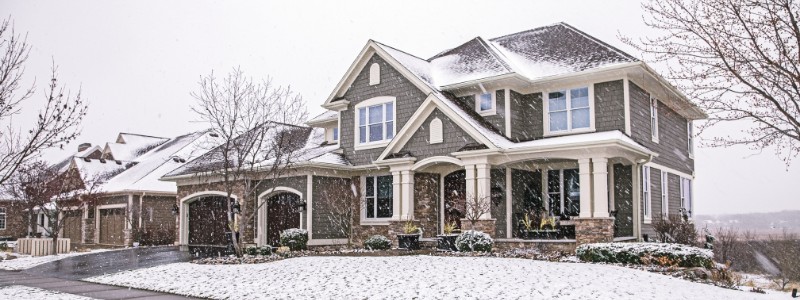
Many major paint manufacturers offer special paints that are formulated for cold weather.
However, as we discussed earlier, most of these are rated for temperatures no lower than 35 degrees. If you’re going to be exterior painting in cold weather, it's best to use one of these specially-designed paints. A paint that's designed for lower curing temperatures will be much more reliable than standard paints mixed with additives for freeze-resistance or thinned for easier application.
Note that the temperature must be at or above the minimum recommended curing temperature for the entire curing process, not just during application. If you add a fresh coat of paint in 45-degree weather, but then the weather turns colder an hour later, the paint may not cure properly even though it will eventually dry. It’s important to track the weather and especially note the night-time low temperature.
Additionally, you’ll want to use a specialized paintbrush when painting with these cold-weather paints. Because paints are thicker in lower temperatures, it's best to use relatively stiff brushes with nylon, polyester, or Chinex bristles, all of which tend to work well with thicker paint.
Before beginning work on your project, you’ll want to check local forecasts and find a stretch of a few days when temperatures will be their highest and the sun will be out, as both of these will help speed up the drying process. You'll ideally need to have a few days in a row when temperatures don't drop below the minimum for the paint you are using because you also need to factor in drying time for multiple coats.
Plan each coat for times when the sun will be shining on the area you are painting. Direct sunlight quickly raises the surface temperature of most building materials. In hot weather, sunlight should be avoided, but in cold seasons it's preferable to paint in direct sun. The sun rises in the east and sets in the west, and throughout the day southern-facing walls will get near-constant sun. Painting north-facing or shaded parts of your home might be a little more difficult, so here’s where it’s especially important to understand when a good weather window is.
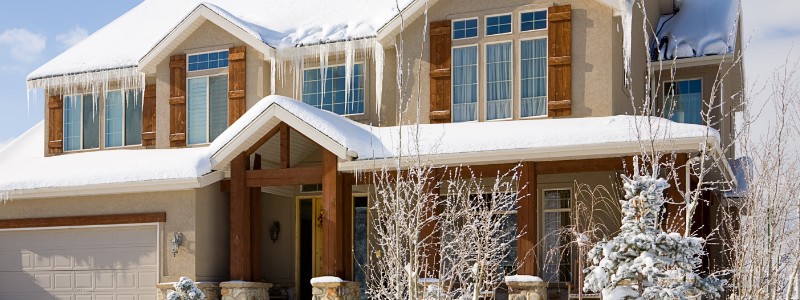
Generally, spring and fall are the ideal seasons for painting just about everywhere in the country. These seasons are when the weather is warm and the sun is not strong enough to overheat the surface that you are trying to paint. This is especially true in Colorado, where we frequently get very intense sunlight. It's also less likely that you’ll encounter temps dipping too low, so you can ensure that your paint will cure properly and your home will look great.
Ultimately, the best season depends on where you live. For instance, if you live up in the mountains in Colorado, spring still might be a little too cold and you’ll want to wait until summertime. If you’re somewhere in the Denver area, however, you might be able to get away with starting a little earlier in the year or going a little later.
Here at Colorado Painting, we take pride in providing long-lasting exterior paint jobs and reliable customer service. We know Colorado (we're locals) and we know painting – hence the name. We’ve assisted homeowners all across the front range of Colorado for decades. We strive to not only meet but exceed your expectations with every project in terms of quality, price, and communication.
Exterior painting in cold weather can be tricky. At Colorado Painting, we are continuously learning about the best products and application methods so that our customers get the paint job they want when they need it.
Give your home or office a fresh coat today!
Taking on a major paint project can be a pretty arduous task. You have to plan out how much paint you need, do all the prep work, and factor in drying time and multiple coats. However, one thing that a lot of people seem to overlook is the type of paint they use. Depending on the surface you’re painting on and a few other factors, you’ll want to decide between enamel or latex paint. Down below, we’ll compare and contrast enamel vs latex paint, list the pros and cons of each, and discuss where you might want to use each paint type.

The main difference between enamel paint and latex paint is the difference in paint bases.
Enamel paint is oil-based, whereas latex paint is water-based.
Enamel paints, also sometimes referred to as hard-surface paints, dry slow but hard, making them perfect for hard surfaces. Latex or water-based paints are fast-drying paints that are more malleable, making them the appropriate paint for projects where the surface may expand or in locations where movement and flexibility are required.
Now that you know a bit more about the chemical difference between enamel and latex paint, we’ll now take you through a few different factors you’ll want to consider when choosing between enamel and latex paint.
Deciding on the finish that you want for your project will help to narrow down your choice of paint.
Eggshell and matte, or flat finishes are only available with latex paints. This latex finish is considered to be the more modern and sophisticated of the two paint types. Latex paint’s finish is easy to clean and is durable enough to withstand all high traffic areas in your home. Satin finish is available as latex paint but can also come in enamel paint.
Enamel dries with a hard glass-like finish that is easy to clean and hard to stain. Enamel paint is available in satin, semi-gloss, or high-gloss. Oil-based/enamel paints are commonly used for trim, cabinets, and other possible high-impact areas due to the high durability of enamel paint’s finish.
The flat or eggshell look of latex paint is a modern look that has become popular for use on interior walls and ceilings in homes.
Flexible yet durable, latex paint is also easy to clean and water-resistant, making it ideal for most interior projects. While durable and waterproof, latex paint remains slightly flexible even when completely dry, making it ill-suited for the exterior climate.
Conversely, the hard glossy finish of enamel paint can look harsh and dated over large areas indoors but is well suited for the outdoor sunshine and elements. Although oil-based or enamel paint tends to fade and yellow over time, exterior oil-based paints in neutral or earth tone colors such as beige, tan, or taupe will be less likely to break down and fade than other oil-based paint colors.
Fumes from any paint in significant amounts can cause lightheadedness, headaches, irritation to the eyes, or trouble breathing.
Latex paint has a milder odor than enamel paint, making it a better choice for walls and bigger projects. Being higher in fumes, oil-based enamel should be reserved for smaller projects or used outdoors when possible.
With either type of paint, if you must be indoors, work in a well-ventilated room or area and open doors or windows to circulate airflow if possible.
Paint additives, extenders, or conditioners can improve your painted project’s overall final look by slightly thinning the paint, elongating the drying time, and allowing the paint to level itself and lay flat for a smooth finish.
Floetrol, shown below, while not the only brand available, is the most popular paint additive for latex paints. Penetrol, also shown below but not the only brand available, is the most popular paint additive for oil-based paints.
Thick even coats of paint can create a smooth brush mark-free finish when the paint is left to level and dry properly.
Latex paint dries faster, so paint must be laid quickly and left to level. Enamel paint takes longer to dry but has a better finish due to the oil-based paint actually absorbing the surface being painted. A longer drying time allows for enamel paint to be manipulated for longer to ensure the perfect thick even coat.
Cleanup of latex paints typically requires only water and a rag. As latex paints are water-based, clean-up is fairly easy.
Enamel paints require paint thinner, such as the one pictured below, for cleaning brushes and surfaces that paint has spilled on.
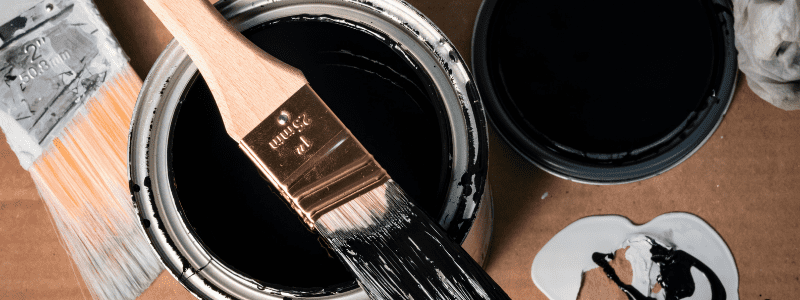
Oil-based enamel paint’s longer drying time may seem like a disadvantage, but the longer drying time gives you more time to work with the paint for a perfectly smooth coat. Enamel paint also goes onto surfaces smoother and with better coverage coat for coat compared to latex paint.
The smooth thick coats of enamel paint left to level and dry will result in the desired flawless durable finish.
Ease of cleaning is another advantage of enamel paint. A good rule of thumb is the shinier the paint finish, the easier it will be to clean. Enamel paint is also waterproof, making it perfectly suitable for any outdoor condition.
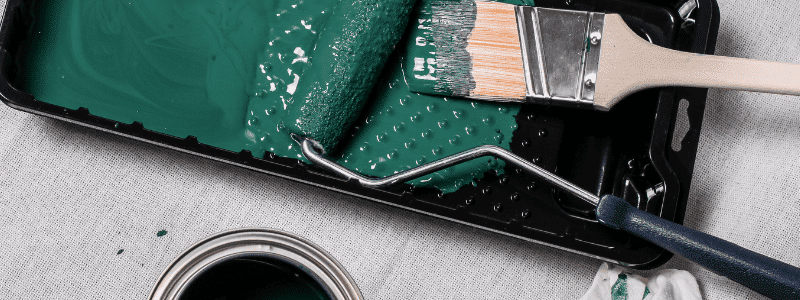
If you want to paint on unprimed drywall or stonewall or brick wall, you should opt for latex paint and a suitable latex paint sprayer.
It also works well on surfaces that have already been painted with other latex or oil-based paints. In addition, it is a more budget-friendly option that works well on large interior walls.
If you live in the Denver, Colorado area and are looking for a commercial or residential paint job, you should look no further than Colorado Painting.
We have been Denver’s best painting company for 38 years, with a proven track record of excellence, no matter what your project calls for. We’ve done it all – interior, exterior, deck staining, and foundation painting, so you can be sure we can handle your job.
Contact us today to discuss your painting needs and get a free estimate.
Your front door is an extremely important part of your home’s curb appeal. Additionally, it’s one of the places of your home’s exterior where you have a little more freedom to get creative in terms of color and design. Why would you want to paint your front door a drab, boring color when you can make your home eye-popping and memorable with a great, unique color that you love? However, perhaps you're struggling with front door paint color ideas.
Let us help.
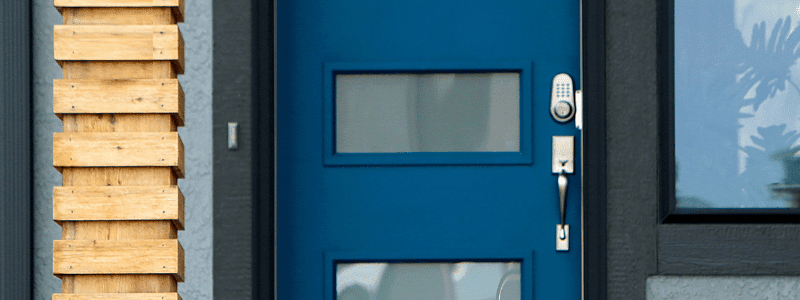
You could choose yellow for a bright and happy aesthetic, red for bold and eye-catching, or blue for a nice, relaxed feel.
There are truly endless options as to what to paint your front door, but hopefully, this blog gives you some ideas or inspiration.
Of course, your front door is the first impression for your guests when they enter your home. You can use your front door paint color to impart the mood of your home. Since it’s so important, you might as well make a good first impression!
It might be a little tough to find inspiration for what different front door paint colors you could use. Down below, we’re going to share a few of our favorite front door paint colors, as well as add some tips and tricks for how you can make your front door and home stand apart in your neighborhood.
There are a bunch of different ways you can go when deciding what color you’d like to paint your front door.
In this section, we’ll share a few different things you might want to consider when deciding what color to paint your front door.

You’ll want to consider how much contrast you’d like your front door paint color to have versus the rest of your house.
If you really want your front door to stand out, you’ll probably want to go more contrasting.
For example, you could paint your front door red if your home is dark blue.
However, you could also be more subtle with your level of contrast if you’d like to keep a more elegant and reserved tone. The level of contrast you choose is totally a personal preference, but just be aware that the more contrast there is, the more your front door will stand out.
You’ll also want to factor in the architectural style of your home when deciding what front door paint color would look best.
For example, if you have a very modern home, you could get away with choosing a more outlandish color, like something neon or green. On the other hand, a lime-green door wouldn’t go as well with a more traditional home, as it’d simply look out of place. Matching the color of your front door’s paint to the architectural style of your home is a great way to maintain continuity in your home’s outdoor appearance while still being able to be creative and unique.
You’ll also want to consider your landscaping and your home’s overall curb image.
A well-colored front door can really be a cherry on top when it comes to your home’s curb appeal, but your front yard and other landscaping also play a role. Additionally, if you’re considering really eye-catching front door paint colors, you could use your landscaping to draw the eyes of passers-by to your front door. However, if your landscaping is blocking a lot of your front door, it might not make sense to go with a really creative color, since people won’t really be able to see it. At the end of the day, factoring in your home’s landscaping and the overall image will help you ensure that you’re making the proper choice with your front door paint color.

Windows are important to consider for a few different reasons.
Number one, if you’ve got windows on your front door, they’ll automatically make your door lighter. You could either choose a darker color to add contrast versus the natural light or choose a lighter color that will complement and accentuate the natural brightness. The same goes for the windows near your front door- the larger they are, the brighter they’ll make your home appear. Having this knowledge can help you be aware of what effect you’re looking to create with your front door paint color.
Knowing the basics of color theory could really help you decide what vibe you’re looking for when it comes to your front door.
Color theory just refers to the fact that different colors have different psychological impacts on people. Down below, we’ll give a brief dive into the psychological impacts of different colors you might consider for your front door:
Red: Several scientific studies have found that red is a stimulating color, so it increases heart rate and boosts blood flow. This paint color is striking and eye-catching, and can really be used to make a strong impression.
Green: Green is a gentle and easy color, which can help your home feel inviting and pretty. People are naturally drawn to green, and it can be used to complement your lawn and home well. It’s a cool, relaxing color that won’t really stand out, but can help create a relaxing vibe.
Orange: Orange is a great combination of bold red and bright and sunny yellow. It’s a great stimulant for the mind and the body, and you’ll like using orange if you’d like your front door to appear energizing.
Blue: Blue is the first color that comes to people's minds when they think of calming colors. Sky blue in particular has a refreshing, calming, and soothing effect that is perfect if you’d like your home to give off an aura of tranquility and relaxation. A darker blue can appear more bold and striking.
If you live in the Denver, Colorado area and are looking for a commercial or residential paint job, you should look no further than Colorado Painting. Not only will we recommend front door paint color ideas, but we will guide you through the entire painting process.
We have been Denver’s best painting company for 38 years, with a proven track record of excellence, no matter what your project calls for. We’ve done it all – interior, exterior, deck staining, and foundation painting – so you can be sure we can handle your job. Contact us today to discuss your painting needs and get a free estimate.
We get a lot of people asking about whether or not they should paint their home’s foundations. For many people, their concrete foundation walls can be kind of an eyesore, and so they wonder: should I paint my foundation?
There are a couple of different schools of thought, but generally, yes, you should paint your foundation. The main reason for painting your foundation is to increase your home’s aesthetic value and curb appeal. Additionally, high-quality exterior paint can provide your home with another layer of defense against UV or moisture damage.
Additionally, most homes have a concrete foundation, and the process for painting concrete is actually pretty straightforward.
For the rest of this article, we’ll talk you through the benefits and potential drawbacks of painting your foundation, and we’ll run you through how to paint your foundation.
Additionally, we’ll share some of the different products you could use to paint your foundation.
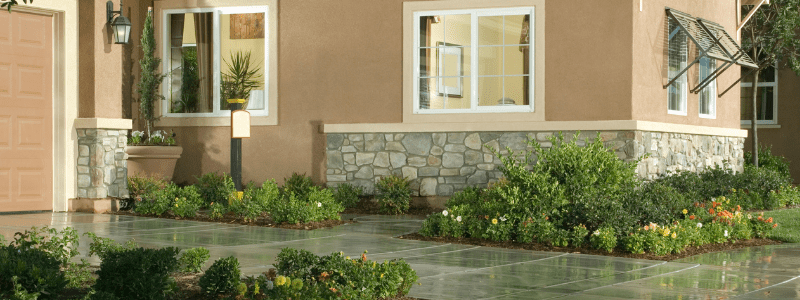
Concrete is the most common type of foundation used in homes.
Typically, it’s visible above ground level but beneath your siding. A lot of homeowners simply choose to leave it alone, and that's okay – but not only will painting it make your home look more appealing, paint can also help protect your foundation from damage.
Painting your foundation can make your home less susceptible to water damage and UV damage.
Modern paint products can cover concrete for up to ten years without peeling, and they’ll allow you to let your foundation look a little prettier than drab gray or white.
Water and UV light are the two biggest enemies to an exterior surface.
Concrete, although it is generally an extremely durable material, is susceptible to both water and sunlight- over time, this exposure can cause your concrete to begin to crack or crumble.
Typically, your foundation will already have some sort of protective coating over it. It could simply be tar, which is the waterproofing layer that the original builder put over your foundation. It could also be parging, which is a smooth grey coat of mortar applied over your foundation walls. Depending on the layer, you’ll need to take different steps to paint your foundation.
Tar is one of the most common foundation coatings, and you’ll see it a lot in older homes especially.
Tar has been around for decades, and it does a fantastic job at providing a light, weathertight barrier between the ground and your home.
In terms of painting, however, you cannot paint directly on a tar coating. You will first need to remove the coating, which requires using heavy-duty hydrochloric acid mixed with water and a heavy-duty scrub brush attached to your drill.
You’ll then want to manually scrape off the remaining tar before using your hose to wash everything down.
This process can be pretty tiring and time-intensive, but unfortunately, it is the only way that you’ll be able to paint your foundation if it has a tar coating.
Parging is simply the smooth layer of decorative mortar that’s often put over foundation walls to give it a smooth, uniform look and cover up any cracks or weaknesses.
It’s a largely aesthetic coating that doesn’t really provide much protection but is able to be painted over, unlike tar.
However, you need to be cautious when painting because parging is known to absorb and hold moisture.
Painting over parging with waterproof paint, which is obviously recommended in terms of protecting your foundation, has the potential to trap any moisture inside the parging and cause your foundation to deteriorate quicker.
On the other hand, not using waterproof paint means your foundation won’t be as well protected from moisture.
The best thing to do is just wait for a prolonged dry spell before you paint over your parging. It might require some patience, but it’s the easiest way to ensure you’ll be properly protecting your foundation.

There are a bunch of different paint or stain options that you can use to cover your foundation.
We’ll take you through a few of the options and their features down below.
Concrete stain comes in two forms: water-based and acid-based.
Acid-based stains last much longer and are permanent, which is important to consider color-wise. In order to apply concrete stain, you’ll need to pressure wash your foundation, use an airless sprayer, and then apply a layer of concrete sealer afterward.
Water-based stains are easier to apply and have a greater variety of colors, but won’t last as long as acid-based stains.
Elastomeric waterproof masonry paint is another good option to use.
It’s waterproof and lasts a long time. Additionally, as the name elastomeric suggests, the paint itself is elastic and can stretch to fill in little pores and cracks in your concrete. This paint still is breathable, and therefore should only be used above grade.
Acrylic paint is very similar to elastomeric masonry paint, but with two key differences.
Firstly, the acrylic paint isn’t elastic, and secondly, it is a much more waterproof seal that can be used both below and above grade. This makes it a very versatile paint choice to use.
Latex paint is another type of paint you could use to paint your foundation.
It’s a more budget-friendly option than acrylic paint, but its downside is that it doesn’t have the same waterproofing ability that acrylic paint has.
However, it comes in a variety of colors and is still a solid choice.
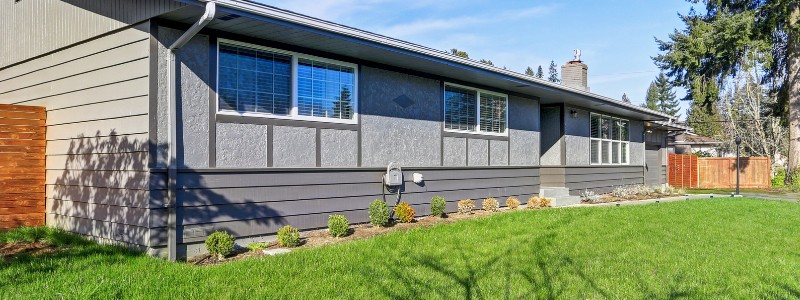
If you live in the Denver, Colorado area and are looking for a commercial or residential paint job, you should look no further than Colorado Painting.
We have been Denver’s best painting company for 38 years, with a proven track record of excellence, no matter what your project calls for.
We’ve done it all – interior, exterior, deck staining, and foundation painting, so you can be sure we can handle your job.
Contact us today to discuss your painting needs and get a free estimate.
Environmentally friendly paints are defined as having no detrimental effect on the environment, nor on society.
At Colorado Commercial & Residential Painting, we are inspired to help preserve the quality of the air we breathe and value the use of environmentally friendly paint that minimizes air quality impact without sacrificing performance.
Although paint is available in a rainbow of colors, not all paints are "green".
It's typically a simple thing to spot the difference between environmentally friendly paint and conventional paint. All you need to do is just pop open the lid and take a whiff.
The familiar fresh paint odor of a conventional latex or especially a solvent-borne paint consists of a variety of greenhouse gases and other environmentally harmful chemicals that are released to the atmosphere as the paint is applied and in the drying stages.
Eco-friendly paints, however, emit little or no environmentally unsafe materials into the air (we call these VOCs, which we talk about more below).
Many environmentally friendly paints contain ingredients like natural dyes, water, milk, casein, essential oils, plant oils, and resins. Additional ingredients are derived from natural minerals such as clay, chalk and talcum, milk casein, natural latex, bees’ wax, earth and mineral dyes. The oil-based natural paints usually have a pleasant fragrance of citrus or essential oils, while the water-based natural paints give off almost no odor at all.
These paints are proven to be the safest for your health and for our environment.
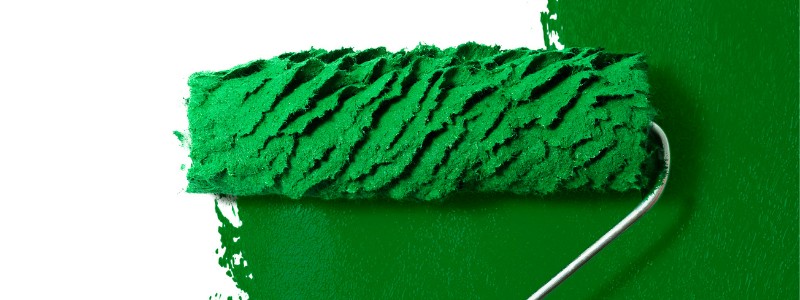
The air you breathe indoors is more than three times as polluted as the air outdoors. A major source of indoor air pollution can be interior paint.
The reason is that most of these paints may contain harmful compounds, toxic substances, and chemicals – VOCs.
The paint production process can also very be energy-intensive.
VOCs are volatile organic compounds.
These include hydrogen and carbon. They evaporate easily into the air we breathe and can cause serious health concerns when inhaled.
The “green certified” paint that we can apply for your special project has no or low volatile organic compounds that are also harmful to our precious ozone layer.
These environmentally preferable coatings have been thoroughly tested according to science-based procedures and are proven to work as well or better than others in their class.
Well, just about everyone and everything benefits from environmentally friendly paint.
As we just mentioned, eco-friendly paints contain little-to-no VOCs. Thus, they are safer for our air and everything that breathes it.
They don't impact the ozone layer. Using eco-friendly paints lightens your carbon footprint.
Environmentally friendly paints contain natural ingredients like clay, milk proteins called casein, citrus, lime, and balsam.
Eco-friendly paints emit little-to-no smell. Moreover, the odor dissipates in under a few hours.
Besides being eco-friendly, these products are also effective in reducing mold, condensation, and mildew.
Eco-friendly paints meet the EPA and GREENGUARD Environmental Institute standards for environmentally friendly paints.

Although environmentally friendly paint is mostly beneficial, there might be some reasons people don't want to use it.
We carry a wide variety of environmentally friendly paints from brands like Sherwin Williams, Benjamin Moore, and KILZ. If you'd like to use this type of paint on the interior or exterior of your home or business, we'll make our best recommendations.
Contact us today for a free estimate.
How a home’s exterior looks is important for a variety of reasons. A well-painted house with a thoughtfully chosen color scheme and proper paint selection has many benefits. An attractive exterior can add to a home’s curb appeal (and ultimate value), as well as allowing a homeowner to create a certain “look” for their home that they enjoy. On the other hand, a poorly painted house (both with color selection and paint selection) can make a house look shoddier and more run-down than it actually is. So, what is the best exterior house paint?

If you’re deciding to repaint the exterior of your home, the actual paint you choose is extremely important! In this article, we’ll talk about a few things you want to consider in choosing an exterior paint, as well as sharing our picks for the best exterior house paints for a variety of materials or desires.
There are many things you’ll want to consider when choosing your exterior house paint. Figuring out how much paint you need will help you formulate a budget and select a properly priced paint.
Properly estimating how much exterior paint your house will need is a little bit tricky, but a decent general rule of thumb is that for houses from 0-1500 square feet, you will need 1 gallon of paint for every 150 square feet of living space.
Above 1500 square feet, 1 gallon will cover 200 square feet.
Just as an example, for a 3000 square foot house, a good estimate would be about 22-23 gallons of paint. Of course, this is just a rough estimate, as actual needs will vary house-by-house.
For this reason, you should consider working with a professional painting company.
In Denver, Colorado, Colorado Painting has been around for over 37 years and has a wealth of experience to draw on.
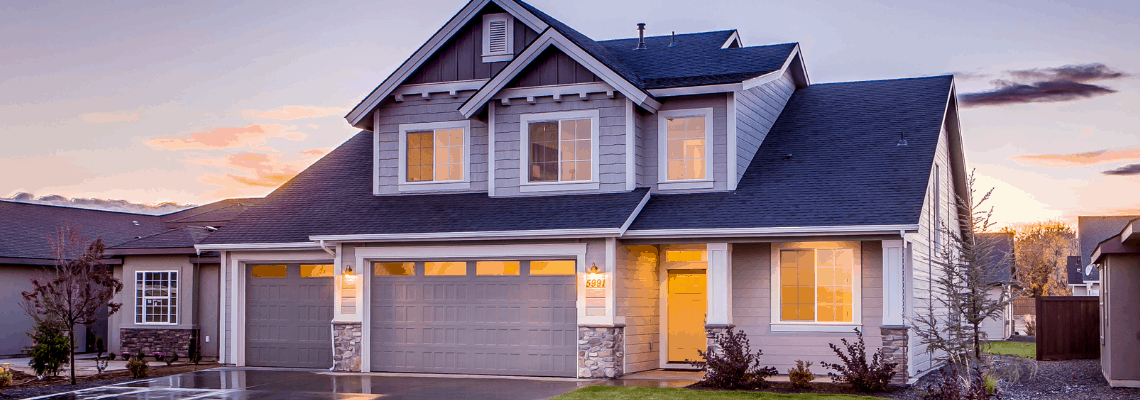
Another important thing to consider when deciding what exterior house paint to use is the environment you live in.
Harsher environments – ones with wind, rain, snow, or excessive heat (like Colorado) will require a more durable house paint than a home in a city with less extreme weather.
A home in Denver is exposed to significantly different weather patterns than a home in San Diego; as such, optimal paints for homes in either city will differ.
A third key factor for deciding the best exterior house paint for your home is the material your home is made of.
Will you be painting on wood, brick, stucco, or vinyl?
Different paints will be better with different materials.

Paint durability depends on a few different things.
Top-of-the-line latex and acrylic paints all tend to be extremely durable, as they will use significantly higher-quality ingredients than lower-quality or oil-based paints.
Additionally, the number of coats you apply will also impact the durability, which is why it is a relatively common practice to apply more than 1 coat of paint to the exterior of a home.
Making sure that your exterior is painted to be durable is extremely critical, otherwise, you will find yourself needing to repaint your home sooner than anticipated.
Now, we’d like to share our picks for the best exterior house paints for certain categories:
Best Overall Exterior House Paint: Sherwin Williams Duration Exterior Acrylic Latex
Sherwin Williams Duration Exterior Acrylic Latex is our choice as the best overall exterior house paint for a few reasons.
It is one of Sherwin Williams’ top paint lines, and has been designed to be extremely durable and resist cracking, peeling, and blistering.
Additionally, it is self-priming and only needs 1 coat to pre-painted wood or two coats to bare wood. It is available in well over 100 different color options & can be applied in temperatures down to 35 degrees Fahrenheit.
All of these factors mean Sherwin Williams Duration Exterior Acrylic Latex paint is a strong, durable paint that will go on your house fast.
Best Exterior House Paint for the Budget-Conscious: Benjamin Moore Ben Exterior Paint
Benjamin Moore ben Exterior paint is a great choice for the Budget-Conscious DIYers. It delivers dependable performance and a fantastic end product while having very forgiving application properties.
This makes it extremely desirable for DIYers that are budget-conscious but still want a beautiful end product.
Best Exterior House Paint for Durability: Benjamin Moore Aura Exterior Paint
Benjamin Moore Aura Exterior Paint is one of the most durable exterior paints out there. Benjamin Moore’s Color Lock technology makes this paint extremely resistant to fading.
This self-priming paint has superior adhesion to all exterior materials, and offers outstanding durability against all weather conditions, no matter how harsh.
Best Exterior House Paint for Wood Siding: Sherwin Williams Emerald Exterior Acrylic Latex
Sherwin Williams Emerald Exterior Acrylic Latex is a great choice for wood siding. It is a self-priming paint (only 1 coat necessary!) that produces a smooth, flat coat that can conceal any imperfections in wood siding.
Additionally, it’s built to resist cracking, peeling, and blistering, and is extremely easy to apply.
Best Exterior House Paint for Vinyl: Sherwin Williams VinylSafe SuperPaint
Vinyl used to be very tricky to paint: you either had to match the color or go lighter, otherwise your substrate would buckle. Now, however, Sherwin Williams offers 100+ VinylSafe colors that you can apply worry-free.
Choosing a VinylSafe color on Sherwin Williams’ renowned exterior SuperPaint will give you a paint that will go on easily, protect your vinyl, and maintain exceptional color and durability.
Best Exterior House Paint for Stucco or Brick: Behr Interior/Exterior Masonry, Stucco, and Brick Paint
Behr Interior/Exterior Masonry, Stucco, and Brick Paint is a great choice for Stucco or Brick. It provides an alkali and mildew-resistant finish, which is ideal for weathered stucco or brick exteriors.
It has a durable satin finish and offers excellent adhesion specifically for stucco, brick, or concrete.
If you’re looking to get your home professionally re-painted in the Denver, Colorado area, there is no better company to work with than Colorado Painting.
We pride ourselves on only using high-quality, top-tier paint, such as many of the paints listed above.
Click here to inquire and get a free estimate!
When you're thinking of getting the exterior of your house painted, you may have a few questions. The most common questions we get are, "how long does it take to paint a house exterior?" and, "what does it cost to paint a house exterior in Denver?"
Every house is a different size and provides a different challenge when it comes to exterior residential painting. That being said, one this is for certain... “You get what you pay for!"
Perhaps, the better answer to "what does it cost to paint a house exterior in Denver?" is that you need to decide for yourself what value you place on your project. We deal with all types of people and projects and the fact is that not everyone needs or wants the more expensive bid. We have found it is best to take a consultative approach with our customers so we can make the best recommendations for their specific project and give the fairest pricing for what all it entails.
If you want the short answer to "What does it cost to paint the exterior in Denver?" or a typical house in Colorado, we can tell you that the range is typically between $3,000 - $5,000.
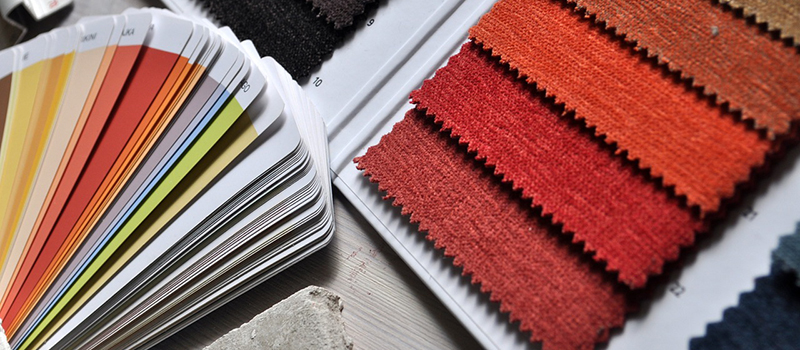
There are three main factors that affect the price of a job for every single painting contractor:
These percentages may fluctuate depending on the job, and most certainly by the company. Most companies would not feel comfortable enough to divulge where your money is going, but we felt it is only fair to be a little more transparent than the other guys and to explain to our customers at least how our company does things. Those are the expenses that Colorado Commercial and Residential Painting is charging for your common exterior residential house painting project. We try to be as fair as we can to everyone we work with and paint for.
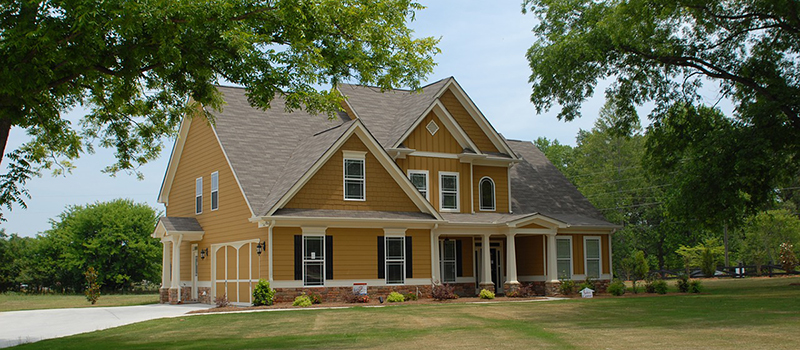
People always seem to choose about three of these responses, as if they feel that they can only expect so much out of a painting company. Or maybe, they think they have to sacrifice some of these factors for the sake of price. This is understandable when so many sales reps are either saying the exact same thing, giving conflicting information or are charging prices ranging thousands of dollars apart. The process of collecting bids feels not too dissimilar to car shopping with the stereotypical used car salesmen trying to sell you lies. How do you know what to believe?
Again, every house is a different size and provides a different challenge when it comes to exterior residential painting. That being said, within the free estimate we provide, we'll provide a timeline of how long we anticipate it taking.
On average, you can expect the residential painting project to be completed within about 2-3 business days. Obviously, that's an average, and we'll always be upfront with you during our detailed quote and scope conversation.
You can check out our entire exterior residential painting process here and we stand behind our work with our unique guarantee.
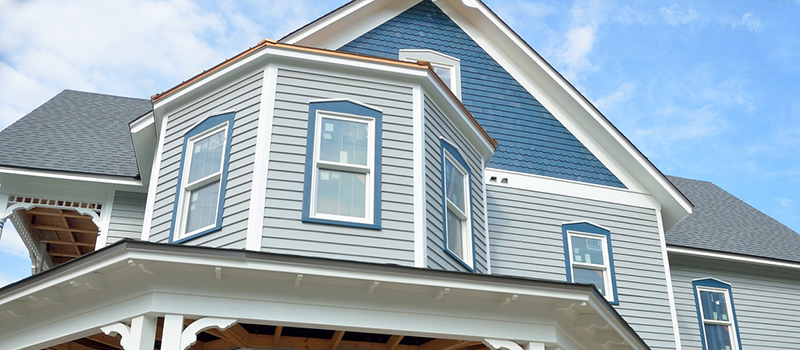
It is very possible to get a fantastic paint job out of a few guys in one company who have painted for a long time. However, Colorado Commercial & Residential Painting offers a high degree of professionalism and organization that you wouldn’t get otherwise. Our customers receive:
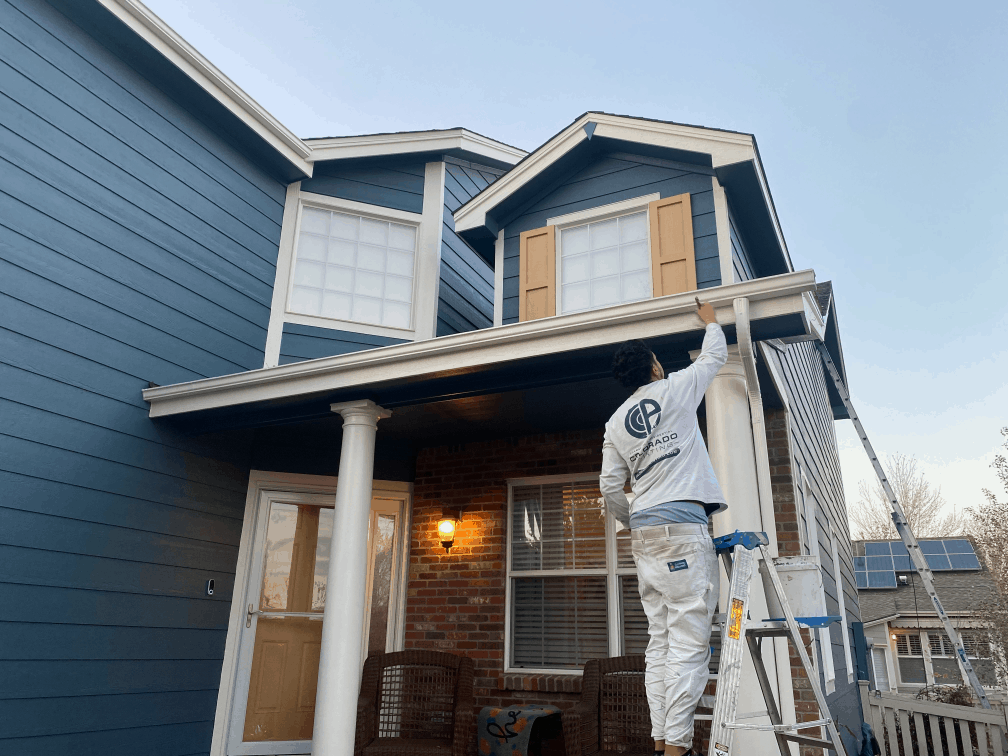
One of the biggest benefits of your Colorado Commercial & Residential Painting Project is the fact that you’re automatically enrolled in our exclusive CCRP3 Guarantee Program. It’s just one more way we give you complete confidence that you’re getting a top-of-the-line painting project for your home or business.
So…what does The CCRP3 Guarantee mean for you?
It’s our PEOPLE -
It’s our PROCESS -
It’s our PROMISE -
Every Job. Every Time. The CCRP3 GUARANTEE!
It’s a sad fact – any exterior paint is going to fade over time. That doesn’t mean you have to accept this reality. There are things you can do to keep exterior paint from fading on your house or office building.
Painters in Philly note that there are many reasons why the paint on the exterior of your house fades.
There is a natural fading process. Paint wears or fades over time. The pigments in the paint responsible for holding the color break down over time. Fade-inducing factors include heat, oxygen, light, and ozone.
Colorado is blessed with nearly three hundred days of sunshine. While this is one of the state’s most appealing features, it is very hard on painted surfaces. High temperatures of summer heat and exposure to sunlight are hard on exterior paint.
Exterior paints have an even greater challenge. The sun’s powerful ultraviolet rays fade objects it hits. The sun burns grass, trees, and skin. These same rays fade the color pigment by leaching the chemical bonds in the paint.
Other harsh weather conditions also present a challenge for exterior paint. Just as Colorado experiences many days of sunlight and high temperatures in the summer, the state also has cold temperatures, rain, wind, and winter ice, and snow.

If you are getting ready to sell your home or business, there is a lot you can do to increase its value with some paint notes HGTV.
Curb appeal gives buyers the first impression of your property whether you are selling the building or you want to attract potential customers to your place of business. How your building looks is the buyers’ first impression. It tells them what to expect when they go inside.
Curb appeal is a powerful marketing tool. Prospective customers are 90% more likely to look inside your home or business if the Wow factor of the exterior is high. Faded exterior paint can seriously affect first impressions. Studies show that a well-maintained exterior adds to its resale value and increases interest by buyers.
Even if you aren’t trying to sell your home, you want your neighbors to value your presence in the community. Keeping the exterior well maintained, clean, and tidy can go a long way toward neighborhood goodwill.
There are several reasons besides curb appeal to protect the exterior surface of your home or office.
Painted surfaces with a fresh look make your home or office look great. This makes a positive impression on neighbors who will strive to make their own homes look good, too. A well-maintained home makes the homeowner and the other residents in that home feel good about themselves and their home. When your home or office looks sharp, you feel more confident and optimistic.
Fresh quality exterior paint provides an added layer of protection from weather, insects, and dust. It can prevent exterior wood from rotting. This cuts down on home repair costs and protects your investment.
A good coat of paint allows the building owner to see repair issues like mold, mildew, rotting wood, water stains, bubbling or peeling paint. You can then catch these while they are still easy to repair.
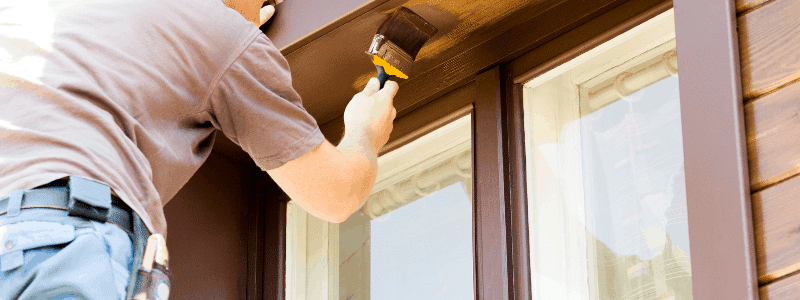
Given factors like the amount of sunshine and temperature extremes, there will always be some fading of the paint on the exterior of your home or commercial property.
Oxygen, ozone, heat, and light are a natural part of our atmosphere. That said, there are ways to slow the fading process.
The type and quality of the paint you use is a contributing factor to fading. How the paint is mixed also affects fading.
Select high-quality paint that best repels those UV rays. Make sure you are using paint specifically intended for exterior surfaces. Exterior paints are of higher quality than those intended for indoor painting. They contain chemicals that reduce fading from the sun’s UV rays.
Writer, Lee Wallender of The Spruce recommends you pay attention to paint sheen.
Sheen refers to both the appearance and the quality of the paint on the exterior of your home. There are four basic paint sheen categories: flat or matte, satin or eggshell, semi-gloss, and high-glass. Because of a high sheen is glossy. Think of it as a mirror. The higher the gloss, the more sunlight reflects off it. Flat or matte finish paint absorbs light. So what does this mean? Choose higher gloss paints because they reflect the sun’s rays. Matte or low-sheen paints absorb those UV rays. This hastens fading.
However, there is another issue to consider regarding high-gloss paints. Usually, painting professionals use the highest gloss paints only for around windows and doors. These areas are washed frequently whereas the larger exterior surfaces are not. For those large areas, painters most often choose semi-gloss. High-gloss paints show imperfections. On metal or wood siding, high-gloss paints show every bump and imperfection.
Bottom line? The quick answer regarding sheen is to choose satin or eggshell for your home’s exterior. It is easier to maintain and presents an esthetically pleasing appearance.
Now, let’s talk color. You may think it doesn’t affect fading. You’d be wrong. The color you choose is important. Yellow, orange, red, dark green, and dark blue paints absorb more light. This speeds up fading. Choose lighter colors. They do not fade as fast. Spearpaint.com explains
Don’t mess with the manufacturer’s shades. When you add tint to the paint, you increase the likelihood of its fading. Don’t darken colors.
Choose inorganic colors like earth tones. Beige, brown, and tan are less likely to fade like organic colors including shades of reds, blues, greens, and yellows.
If you had painted the exterior of your home or business a decade ago, the paint would have most likely have faded by 79% in that ten-year period. On average, the exterior paints of ten years ago held their elasticity for only seven to ten years. Paint faded about 7% a year.
However, today’s exterior paints are more fade-resistant. Their chemical makeup has improved. Primers are an important part of the fading reduction. Using paint with built-in UV protection has cut the 7% annual fade rate to somewhere between one and three percent.
There are paint choices today that combat fading. Satin, lifetime coatings resist fading. Selecting an exterior paint that protects from fading and resists dirt is a good start. Products like BEHR Marquee exterior paint and primer protect from fading and resist dirt.
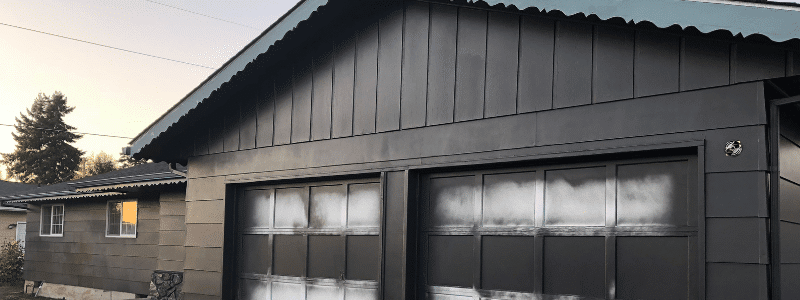
For years, the experienced, skilled professionals at Colorado Painting have proudly provided high-quality painting services in the Denver Metro Area. As a local business, we know the challenges of Colorado weather.
We are eager to work with our residential and commercial clients to meet unique customer needs.
For a free estimate and to discuss your paint needs, give us a call at (303) 574-1740.
Homeowners Associations or HOA for short, are found within many communities here in Colorado. They usually oversee and manage neighborhood common areas, amenities and ensure that property owners are following their rules and regulations. Their goals are usually centered around helping maintain clean and beautiful neighborhoods and are often known for keeping an eye on parks, sidewalks, yards, and of course the exterior of your home. In order to maintain this, there are HOA painting guidelines.
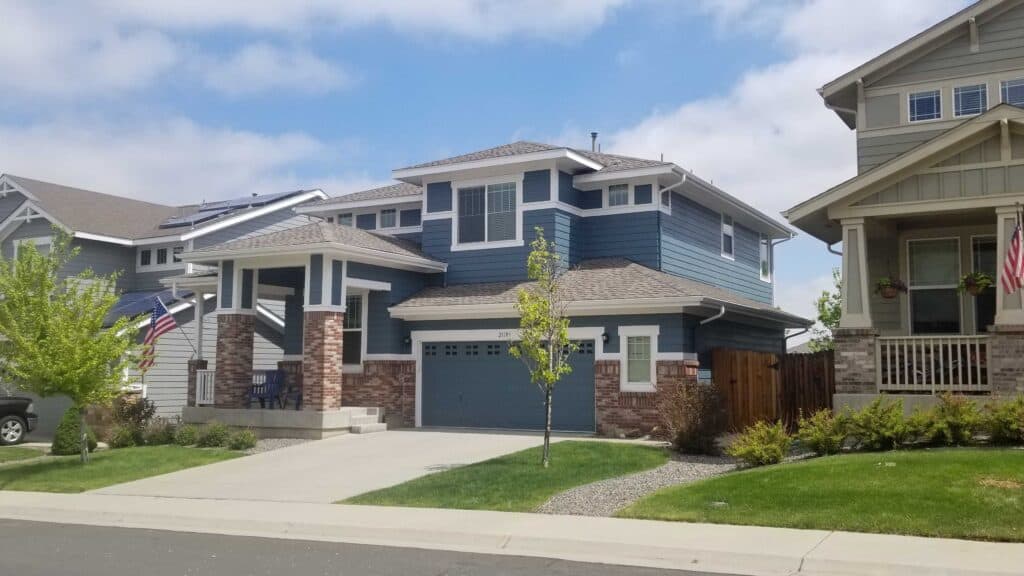
When deciding to get your home’s exterior painted within the Denver Metro Area, it’s important you do some research about your communities’ requirements and HOA painting guidelines. Since the look and feel of the neighborhood is their responsibility you may find that they have strict rules regarding what exerior paint colors you can use, which is why you must first submit your colors for approval before painting.
If you paint without this approval, chances are they will eventually notice it and you'll face consequences for not following their procedure. Some may issue a fine and then make you go through the color approval process. If your colors do not meet their standards you would need to repaint your home again or face property liens that could affect the possibility of selling your home in the future. This could more than double your cost of painting and cause you a lot of headaches.
That being said, the HOA Color process isn't usually that difficult.
If your HOA has a color book take some time to review it and see if you like any of their combinations. Want to choose your own colors? That’s usually okay too you just want to make note of their color requirements like colors they don’t allow or LRV scores.
What are LRV scores?
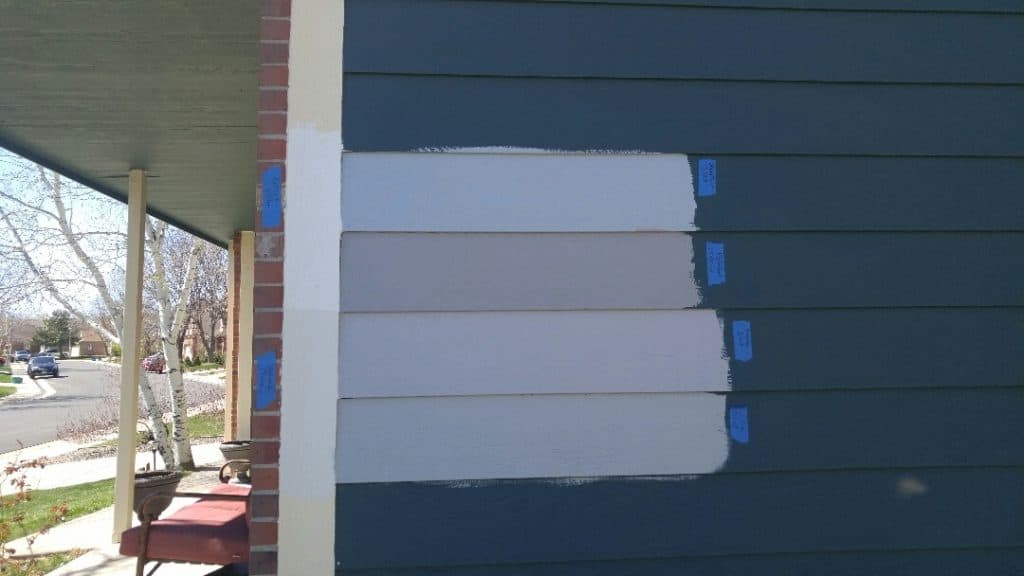
Some HOAs require that you submit color paint chips or paint up samples on your garage so they can go by to see. Check to see what your HOA’s requirements are.
If your colors get denied then you will need to start the whole process again. This is why it’s in your best interest to review their standards and requirements beforehand so you know what they are looking for. Your rejection will likely come with an explanation as to why they were not approved.
First off, please know that everyone sees colors differently and if you struggle with or do not know much about color theory there are people and resources that are here to help you.
Still no luck? Reach out to your painting contractor and ask if they offer any sort of color consults! Colorado Commercial & Residential Painting is your one-stop-shop here in the Denver Metro area for all things painting and can assist you if needed on your color selection. We work well with HOAs and know all the HOA painting guidelines.
The exterior of your home is the first thing people will notice about your house. Having family over? They’ll see the outside of your home long before they see the inside. The first impression you make is a crucial social construct – and that applies to your home as well.
More often than not, people clean the inside of their homes before having company over – it’s common courtesy. No one wants people to think that they don’t take care of their home. But it’s not just about having an organized kitchen or a clean living room. Granted, that’s important. But what good does an elegant indoor living space do if the outside of your home looks like it hasn’t been cared for since construction?
Exterior paint is a tricky subject for homeowners. Does it last long, what should I buy, when should I paint it? These are all common questions when considering an exterior paint job. Knowing how often to paint your house exterior will help you keep your home looking its best and keep its curb appeal.
Generally speaking, it’s best to get a paint job every five or so years – regardless of the material.
There are many factors that affect how long a paint job will last: temperature, humidity, wind strength, the care put forth by the original painters, etc. It’s hard to know exactly where your home lands on this scale.
Thankfully, a painting professional like the ones here at Colorado Commercial & Residential Painting can answer any questions you may have.

Truthfully, this is a question you can only answer yourself. Are you proud of how your home looks? If your answer is a “no,” a “maybe,” or even an “I’m not sure” – then it’s probably time to get a paint job.
Look at the exterior of your house. Do you see cracks, bubbles, or mismatching colors? It’s not uncommon. Colorado weather can do a number on your home – it was eighty degrees a week ago, how is it snowing?
How often you paint the outside of your home is, ultimately, up to you. Let’s go over some of the basics of house painting so you know exactly how often your home needs to be painted.
When deciding whether or not to get a new exterior paint job, you need to look at a few key factors of your home’s exterior.
Different materials all hold a paint job differently. You need to figure out what your home is made of when deciding whether or not to paint.
The lifespan of a paint job differs between construction materials:
These are the most common types of siding. The material of your home should be the first consideration when debating whether or not your home needs to be painted.
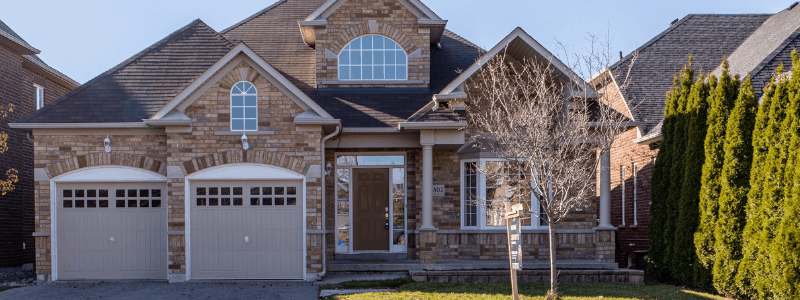
Determining what type of paint was used during the last exterior paint job might not be easy – but it will make a difference on when you’ll need to paint again.
Typically, house painters will use acrylic or latex-based paints for exterior painting. These paints dry the fastest and are generally the easiest to apply. An acrylic paint job should be good for around ten years depending on exterior material. This is a slightly longer life span than latex and oil-based paints.
The quality of the original paint is also a determining factor. Cheap paint won’t last nearly as long as the high-quality, more expensive variants.
Weather plays possibly the biggest role when considering a paint job. Moderate climates lead to ideal conditions – you don’t have to paint as often.
In Colorado, we’re far from moderate. The often-low humidity mixed with high precipitation in winters contributes to a paint job not lasting as long as it would elsewhere.
Instead of painting a home every five years, in Colorado, it’s slightly less. This also depends on the above-mentioned other factors. A wood-sided home in Denver will need a paint job likely every two years.
Obviously how you paint your home contributes to how long it will last. Factors like when it was painted last, how many coats were applied, and what time of year it was painted in will all affect how likely it is that you need a new paint job.
See if you can get in contact with the original or last painters to find out everything you can about your home’s last paint job.
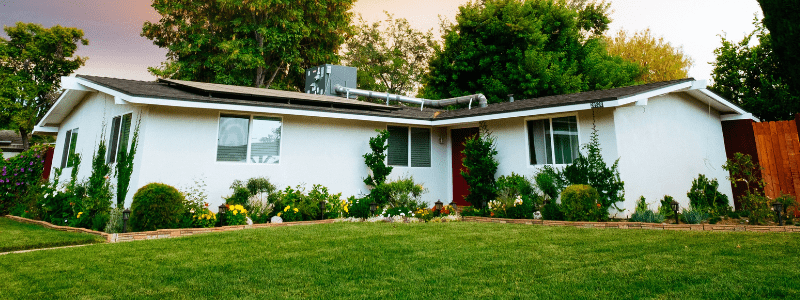
How often should you paint your house exterior? In most cases, once every five years.
But there are many variables that you need to consider when asking this question – weather, quality of the last paint job, type of paint, and type of material.
Each home is different. If you’re unsure of exactly when you need to paint your home again, consider talking to professionals.
We can tell you everything you need to know about exterior paint jobs and answer any questions you might have.
If you’re debating on a new paint job right now, contact us to get a free quote and start improving your home.